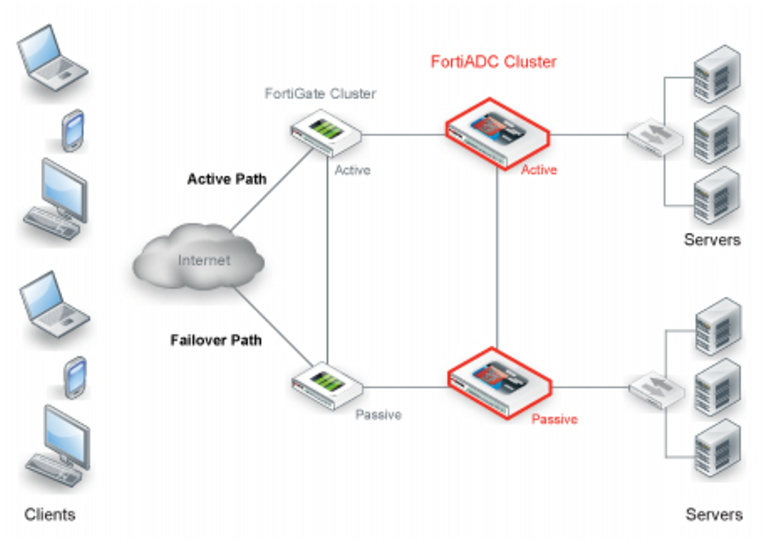HA feature overview
FortiADC appliances can be deployed as standalone units or as a high availability (HA) cluster. A cluster is two or more nodes. A node is an instance of the appliance/system. In a cluster, one node is the primary node.
HA solutions depend on two types of communication among cluster members:
• Heartbeats. A cluster node indicates to other nodes in the cluster that it is up and available. The absence of heartbeat traffic indicates the node is not up and is unavailable.
• Synchronization. During initialization, the primary node pushes its configuration (with noted exceptions) to member nodes. After initialization has completed, the nodes synchronize their session tables.
Figure 48 shows an
active-passive cluster in a single network path. In an active-passive cluster, the primary node is the active node that handles all traffic. In the event that the primary node experiences hardware failure or system maintenance,
failover takes place. In failover, the standby node becomes the primary node and processes the traffic that is forwarded along the network path.
Figure 49 shows a
redundant path active-passive cluster. A topology like this is a best practice because it is fully redundant, with no single point of failure. If the gateway, load balancer, or switch were to fail, the failover path would be chosen.
Figure 50 shows an
active-active cluster. An active-active cluster supports failover and load-balancing among up to eight member nodes. The routers on either side of the cluster must be configured to use equal cost multipath (ECMP) to distribute traffic to the FortiADC cluster nodes. All nodes actively receive and forward traffic. The primary node has a special role. It pushes its configuration to member nodes. The primary node also handles all firewall-only traffic, and it acts as the failover node for failed traffic through any other node in the cluster. For example, in
Figure 50, node1 is the primary node. If node2 were to fail, its traffic would failover to node1. If node3 were to fail, its traffic would also failover to node1.




